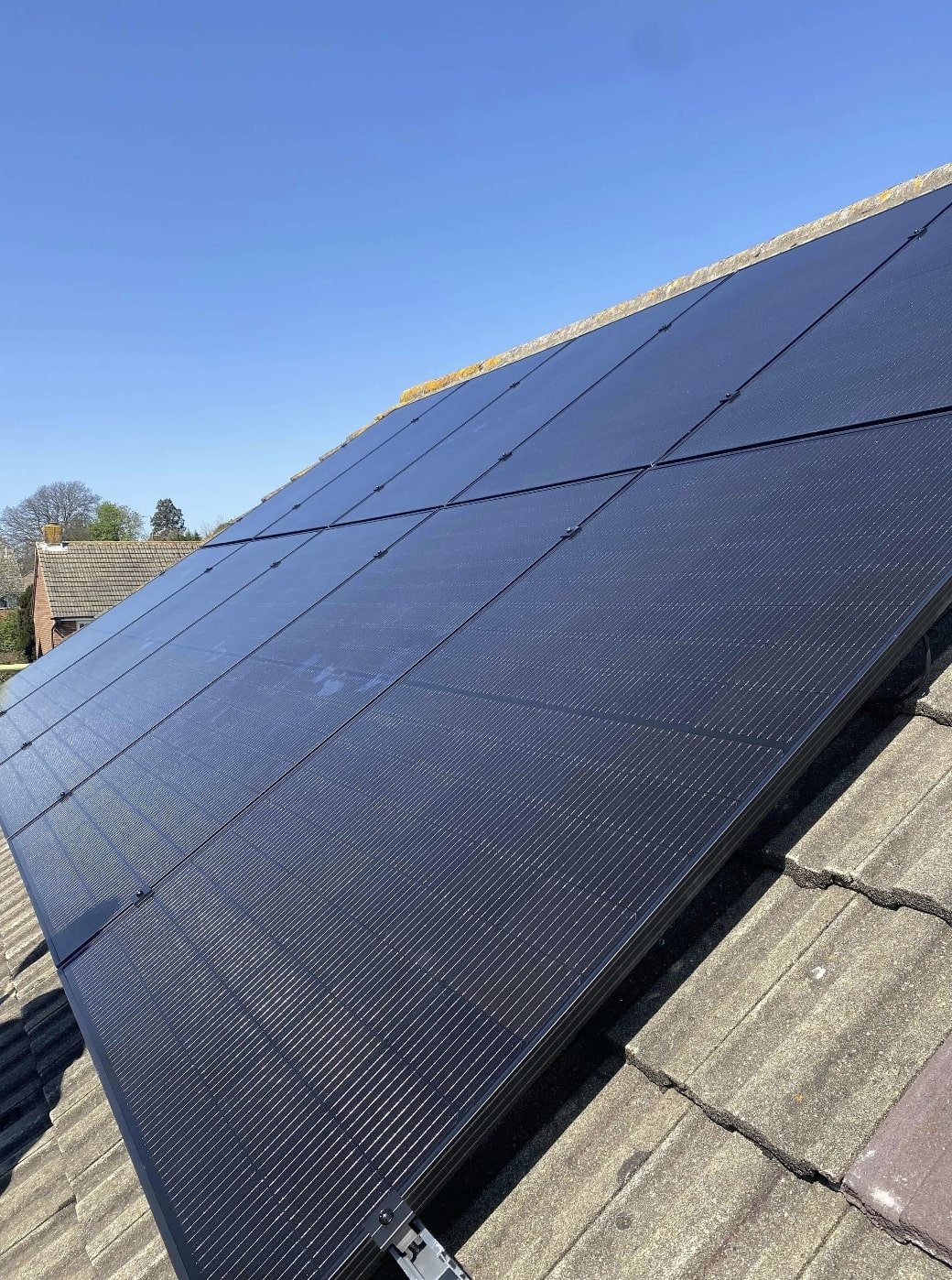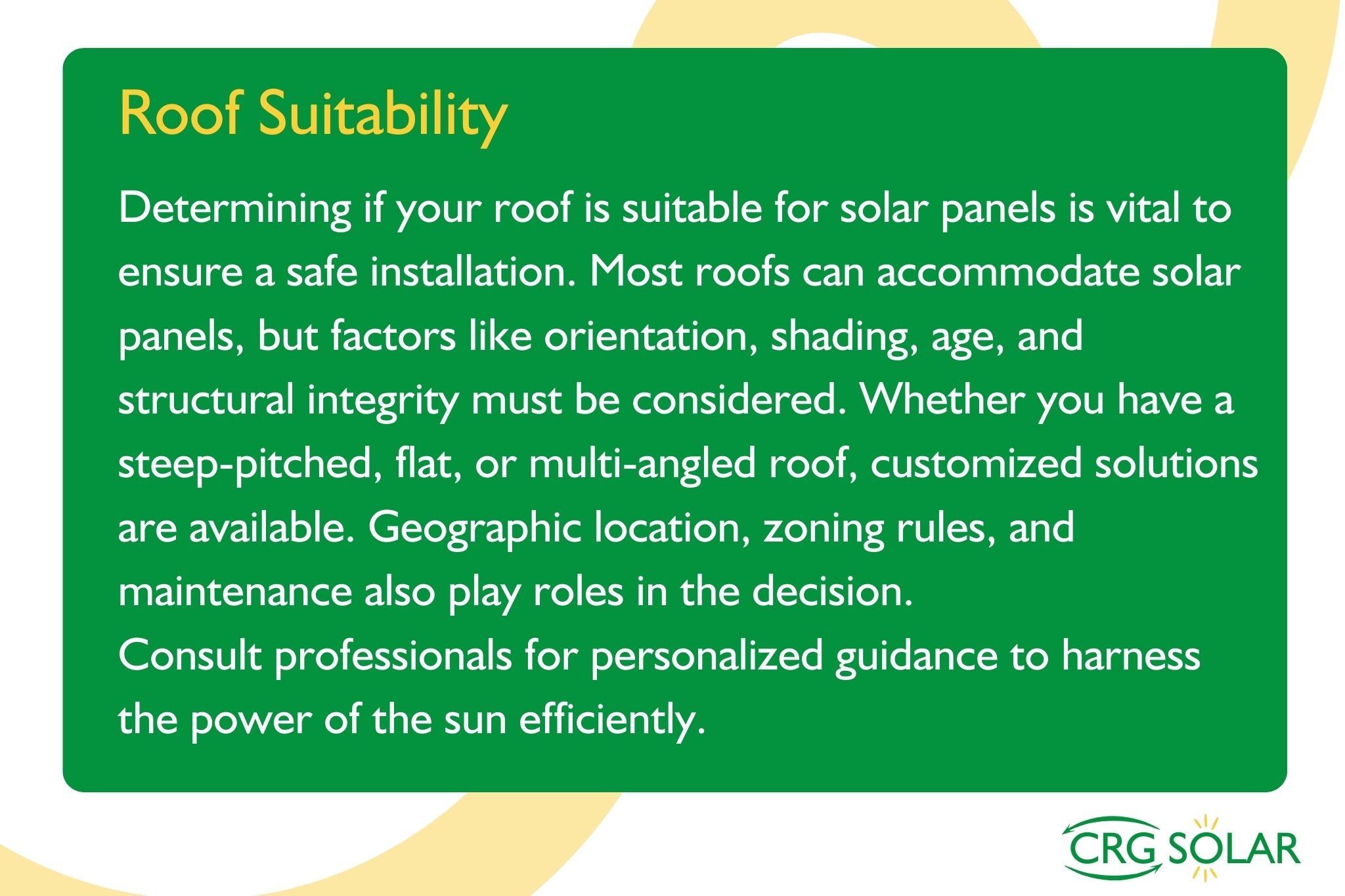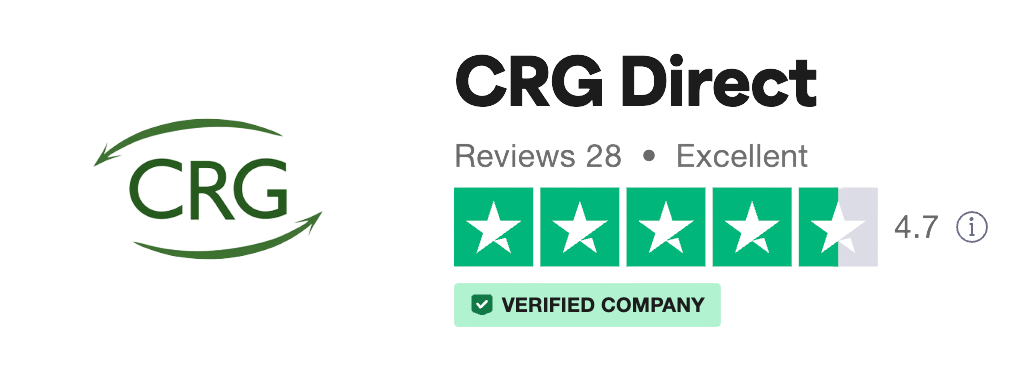Is my roof suitable for solar panels?
Most roofs are suitable, but you should be cautious if your roof is in poor condition.
What’s on this page?
Explore key points to know when finding out if solar panels are right for you.
Assessing Your Roof's Suitability
Ideal Roof Orientation
Impact of Shading
Roof Age
Roof Space
Material Types
and more
Is my roof suitable for solar panels?
Most roofs are suitable for solar panels. You wouldn’t be suitable for solar panels if you have a roof in bad condition, a thatched roof or a roof with limited roof space.
If you are not sure about the condition of your roof, talk to a professional.
Solar panels are a great way to get clean energy and reduce your electricity bills. But before you start your solar journey, you need to determine if your roof is suitable for solar panels. In this blog post we’ll answer ten questions to help you assess your roof’s suitability for solar panel installation.
Choosing the right roof for solar panels is super important! A metal roof, especially with standing seams, makes installation easier and cheaper since panels can be attached without drilling. The best ones face south and are made of strong stuff like metal, tile or clay. Tile roofs, while durable and long lasting, require special mounting solutions and more labor costs due to the brittleness of the tiles. They should get lots of sun and be in good shape so the solar panels work great. Regular roof check-ups help keep everything running smooth.
On the other hand, not-so-great roofs for solar panels are shady ones or those in bad condition. Shady roofs mean less sun, not good for solar. Roofs without enough support or with asbestos are also a no-go.
They can be unsafe and harm the environment. So, you should choose a good, sunny and sturdy spot for solar panels!
The Best Roof For Solar Is:
South Facing
Metal, Tile or Clay
Unshaded
In Good Condition
Unsuitable Roofs For Solar May Be:
Shaded
In Bad Condition
Unsupported
Have Asbestos Material
How can I determine if my roof is suitable for solar panels?
You can start by assessing your roof’s orientation, shading, age and structural integrity. These factors play a big role in determining suitability. Plus the complexity of the roof structure can affect the solar installation process and potentially increase labor costs and require specialized skills. For example, installing solar panels on a tile roof involves unique challenges such as specialized mounting solutions and increased labor costs due to the brittleness of the tiles.
What is the best roof orientation for solar panels?
South-facing roofs get the most sunlight in the Northern Hemisphere so they are ideal for solar panels. East and west oriented roofs can also work.
Does shading affect my roof’s suitability for solar panels?
Yes, shading can significantly impact your solar panel efficiency. Make sure your roof gets plenty of sunlight throughout the day.
How old can my roof be for solar panel installation to still be viable?
Solar panels last 25-30 years so your roof should have at least 10-15 years of life left to be a suitable candidate.
Are there structural requirements for my roof to support solar panels?
Your roof should be in good structural condition. Consult a structural engineer or solar installer to assess its capacity to support the additional weight of the solar system. Can I install solar panels on a flat roof?
Yes, flat roofs are suitable for solar panels with the right mounting system. Flat roof systems are usually installed with the help of weights or ballasts.
What if my roof has multiple angles and surfaces?
Solar panels can be installed on various roof types including those with multiple angles. Custom mounting systems can adapt to different roof structures.
Will the material of my roof affect its suitability for solar panels?
Solar panels can be installed on most roofing materials including asphalt shingles, metal roofing and tile. Compatibility depends on the mounting system.
How do I know how much energy I can generate with my roof?
You can use our online solar calculators or talk to one of our team members who can do a site assessment to estimate your roof’s solar potential.
Are there government incentives for installing solar panels that I should consider?
Depending on your home’s energy rating you may qualify for the ECO4 grant. Find out if you qualify by clicking here.
How do solar panel design and aesthetics impact my roof’s suitability?
When installing solar panels it’s not just about functionality; aesthetics play a big role too. The design and look of your solar panel system can greatly impact the overall look of your roof and home.
Solar panels come in various sizes, shapes and colours so you can choose a design that matches your roof colour and architecture. For example, thin-film solar panels are popular for those who want a sleek and modern look. These panels are thinner and more flexible than traditional ones, so less obtrusive and more visually pleasing.
Another option is Building-Integrated Photovoltaics (BIPV). These solar panels are designed to blend in with traditional roofing materials such as shingles or tiles, so a coherent and aesthetically pleasing look. BIPV can turn your roof into a power-generating surface without sacrificing style.
The orientation and angle of your solar panels matter. While a south-facing roof is ideal for maximum sunlight exposure, some homeowners prefer a more subtle look by installing panels at a lower angle. This can help the panels blend in better with the roofline.
When designing your solar panel system, you must consider the roof material, pitch and overall structure. Metal roofs, tile roofs and other durable roofing materials can support solar panels well while keeping the look harmonious. A well thought out design ensures efficient energy production and adds value and curb appeal to your home.
In summary, a well designed solar panel system can be both functional and beautiful making your investment in solar energy systems a smart and stylish choice.
Types of Roofs Suitable for Solar Panels
When it comes to installing solar panels the type of rooftop you have can play a big role in determining the feasibility and effectiveness of the installation. Here are some common types of rooftops that are suitable for solar panels:
Asphalt Shingles
Asphalt shingles are one of the most common type of rooftops in the US and are suitable for solar panels. They are relatively inexpensive, easy to install and can last up to 30 years. Asphalt shingles are also a popular choice for solar panels because they are easy to work with and can be installed on various roof pitches.Metal roofing is another popular choice for solar panels. Metal roofs are durable, long-lasting and can withstand harsh weather conditions. They are also eco-friendly and can be made from recycled materials. Metal roofs with standing seams are particularly well-suited for solar panels as they provide a secure and watertight seal.
Tile Roofing
Tile roofing is popular in many parts of the world, especially in warm and sunny climates. Tile roofs are durable and can last up to 50 years or more. However, they can be more challenging to install solar panels on as they require specialized mounting systems and may require additional labor costs.
Other Roof Types
Other types of rooftops that are suitable for solar panels include tar and gravel roofs, composite shingles and wood shake roofs. However, wood shake roofs are not recommended for solar panels due to fire safety concerns. Tar and gravel roofs are a viable option but may require additional support and may be more expensive to install.
Remember that the suitability of a rooftop for solar panels depends on many factors including the roof’s age, condition and material. It’s recommended to consult with a licensed solar panel installer to determine the best approach for your specific rooftop.
FAQs
Q: Are there any geographic considerations when determining if my roof is suitable for solar panels?
A: Yes, your location plays a big role. Regions with more sunlight are generally better for solar panels. Latitude, climate and local weather patterns can affect solar panel efficiency.
Q: Can I install solar panels on a roof with a steep pitch?
A: Yes, solar panels can be installed on roofs with steep pitches but the mounting system may need to be adjusted to ensure optimal sun exposure and safety during installation.
Q: What if my roof is already covered in snow during the winter months?
A: Snow can temporarily reduce solar panel efficiency. However, solar panels are designed to self-clear to some extent and snow can be easily removed to maximize energy production.
Q: Does the size of my roof matter when considering solar panel installation?
A: Yes, the size of your roof matters as it determines how much roof space is available for installing solar panels. A larger roof allows for a larger solar array and potentially more energy production.
Q: Are there any zoning or homeowners’ association restrictions I should be aware of?A: Yes, local zoning and homeowners’ association rules can impact your ability to install solar panels. Check with your local authorities and association for any restrictions.
Q: Can I install solar panels on a roof with skylights or roof vents?
A: Yes, it can be worked around. Installers can design the system to accommodate these features.
Q: Do I need to reinforce my roof before installing solar panels?
A: It depends on your roof’s condition and weight-bearing capacity. A structural assessment by a professional may be necessary to determine if reinforcement is needed. For example, tar and gravel roofs may require additional structural support to be compatible with solar energy systems.
Q: What’s the typical payback period for a solar panel installation?
A: Payback period varies depending on energy usage, incentives and local energy prices. Typically 5-15 years.
Q: How do I maintain my solar panels once they’re installed on my roof?
A: Solar panels require minimal maintenance. Just clean them periodically and make sure they’re free of debris. Professional maintenance checks can be done annually.
Q: Can I net meter with a solar panel system on my roof?
A: In many areas, yes. Net metering allows you to sell excess electricity generated by your solar system back to the grid and reduce your energy bills further.

Get a free installation estimate
One of our expert team members will contact you to give you an estimate and answer any questions you may have.
Join the solar revolution and save up to 80% on your energy bill.
✓ No obligation
✓ MCS accredited
✓ Your questions answered
Read our great reviews on Trustpilot
Dave Wood
“We had a great experience with CRG…”
“We had a great experience with CRG installing our solar and battery. Pre-install I had quite a few questions and they were always answered quickly and in an easy to understand way. During the installation the team discovered that it wasn’t going to be as straightforward as they initially thought due to the strange layout of our house and the location of the electrical fuse box etc but they did a great job of working out a route for the cabling that caused the least disruption. Since the install I’ve had another couple of questions about configuring the system and again, I got a quick and helpful response.”
Joyce Scott
“A pleasure to deal with.”
“From the initial survey till completion of the installation I have been most impressed. There was no hard sell, everything was explained clearly. Once I had accepted the lead date was just a matter of weeks. The actual installation was completed very efficiently. The backup support is second to none. l can't recommend Frank, Melissa and the team more highly for the whole experience.”
Paul Wickenden
“Very impressed”
“Frank came out to measure and quote for solar. He was professionally and quick with his quote. We did not feel rushed or pressured into purchasing at all.
Timescales were accurate and their communication was speedy and sincere.
Installation was brilliant. You could tell the installers knew exactly what they were doing.
Warning- The app to see your solar usage and generation is addictive!”




